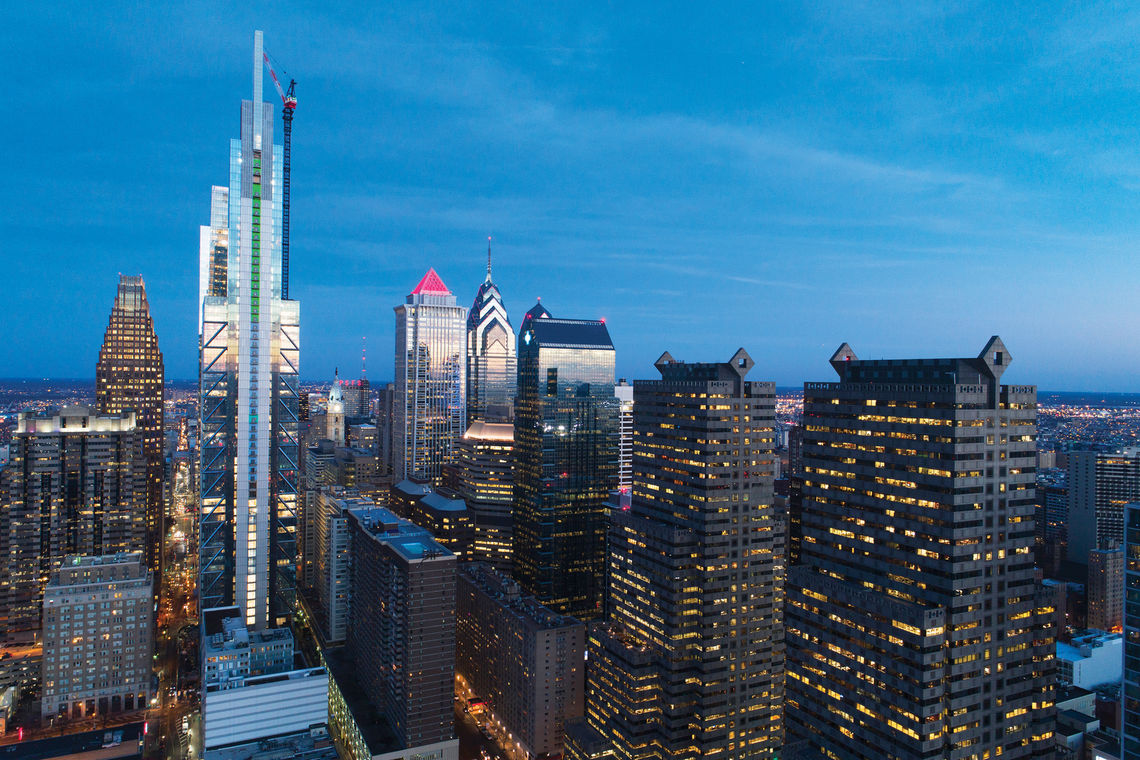Op-ed: Sure, Philly is growing. But not fast enough.
The following op-ed originally appeared in The Philadelphia Inquirer on April 20, 2018.
By Paul R. Levy
Philadelphia is enjoying its longest economic expansion of the last 50 years, adding 55,100 jobs since 2010, growing in all but one year since 2005. In 2016, a record, 13,600 jobs were added; in 2017, we grew 10,700 more – all private sector; the public sector has contracted for the last 25 years.
Center City, the largest workplace in the city and region, accounts for 42 percent of these jobs (307,000 employees). Diversification is downtown’s defining strength.
Professional, business, and financial services, real estate, and information account for 40 percent of downtown jobs, followed by education and health services, accounting for 20 percent; entertainment, leisure, hospitality, restaurants, and retail with 16 percent, and federal, state and local governments add 12 percent.
Since 2010, 25 percent of those who moved into Philadelphia moved downtown, making it the fastest-growing neighborhood with 190,000 residents. This vibrant live-work core is just 6 percent of the city’s land area but generates 32 percent of property-tax revenue for the city and School District, more than 50 percent of BIRT, and almost 50 percent of the wage tax.
Other growth areas include University City, with 11 percent of city jobs, and the Navy Yard and Temple’s campuses, each with 1 percent. But since 2005, the rest of Philadelphia has shed 1,300 of its jobs each year.
This is the bad news: Philadelphia’s 25.7 percent poverty rate puts us atop the 10 largest cities. The downtown story is about millennials and empty-nesters moving in, families having children. But in many other neighborhoods, working and middle-class families still leave for the suburbs. Downtown, 65 percent of residents have bachelor’s degrees; citywide, only about a quarter have degrees, and many young people don’t ever finish high school.
Such disparities inspire references to Dickens’ Tale of Two Cities. But the Philadelphia story is not a tale of two cities; it’s a tale of one city not growing fast enough to address problems we’ve inherited, when we can count less on higher levels of government for help.
After shedding a quarter of its jobs since 1970, recent growth is grounds for celebration. But by national, urban standards, things should be better. Despite strong recent growth, Philadelphia has not kept pace with America’s 25 largest cities. Since 2009, the largest cities outperformed the national economy, adding private-sector jobs at 2.3 percent per year, compared with 1.4 percent in Philadelphia. Recent trends lifted Philadelphia above Baltimore and Memphis but still behind 23 other cities, among them Boston, Detroit, New York City, and Washington, as well as the national rate of 1.7 percent per year.
Those who have lived in Philadelphia for decades glance in the rearview mirror, marveling how far we have come. Mobile millennials, with substantial college debt, fill sidewalks and apartments in Center City and take our vitality for granted. But on social media, they talk with friends in cities passing us by. Philadelphia offers affordability; our peers, greater opportunity.
More than millennials get discouraged by slow growth; 52.5 percent of downtown jobs are held by Philadelphians.
But renewal in Center City and University City is simply not big enough to offset citywide industrial decline. Other Northeast cities that hemorrhaged manufacturing rebounded with more robust, postindustrial growth. Using 1970 as a baseline, New York’s employment is up 11 percent; Boston and Washington are both up 23 percent. Philadelphia has 26 percent fewer jobs than it did in 1970, similar to Detroit.
Slow recovery is why 40 percent of working residents from each Council district outside downtown (211,000 workers) reverse commute to the suburbs. Suburbs simply have more jobs and, until recently, continued to add them faster.
Because Philadelphia’s wage tax requires employers to withhold the full amount, regardless of where a city resident works, commuting to the suburbs carries an incentive to move there. While good schools matter, 81 percent of households that left Philadelphia between 2010 and 2016 did not have children. Philadelphia is the only big city with a Business Income and Receipts Tax (BIRT) on both gross receipts and net income, adding a 20 to 50 percent premium over suburban costs.
It’s not that we tax too much; we tax the wrong things. Philadelphia is unique among major cities because our municipal government is 60 percent dependent on taxing what easily moves — employee wages and business revenues. We’re out of sync with mobile, 21st-century, postindustrial realities and are left with slow, uneven growth.
Disparities between thriving and declining sections of Philadelphia are enormous. The temptation to slip into resentment and antigrowth rhetoric is strong. But given national trends, we have no choice but to create at home a competitive environment for growth and opportunity.
If local growth since 2009 were robust enough to make us just average, attaining the 2.3 percent growth rate of America’s largest cities, Philadelphia would have added 45,400 more jobs (one homegrown Amazon) on top of existing growth of 55,100 for a total of 100,500 new jobs. The unemployment rate, which dropped from 10.9 percent in the depths of recession to 6.2 percent in 2017, could have dropped more, expanding the tax base, generating more revenues for the city and schools without raising rates. It’s time to focus not only on our schools but on a strategy for inclusive growth.
